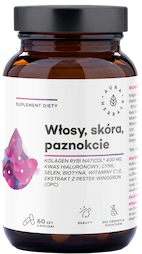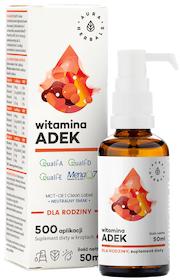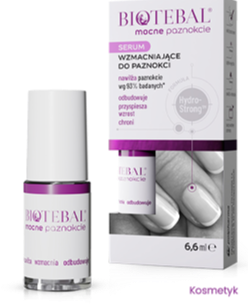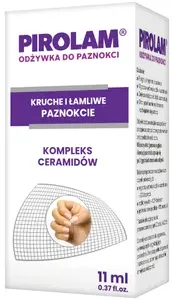Toenail care. How to care for your nails at home
Proper nail care can prevent breakage and increase flexibility.


Learn more about our editorial process
.

Learn more about our editorial process
.

Learn more about our editorial process
.

Learn more about our editorial process
.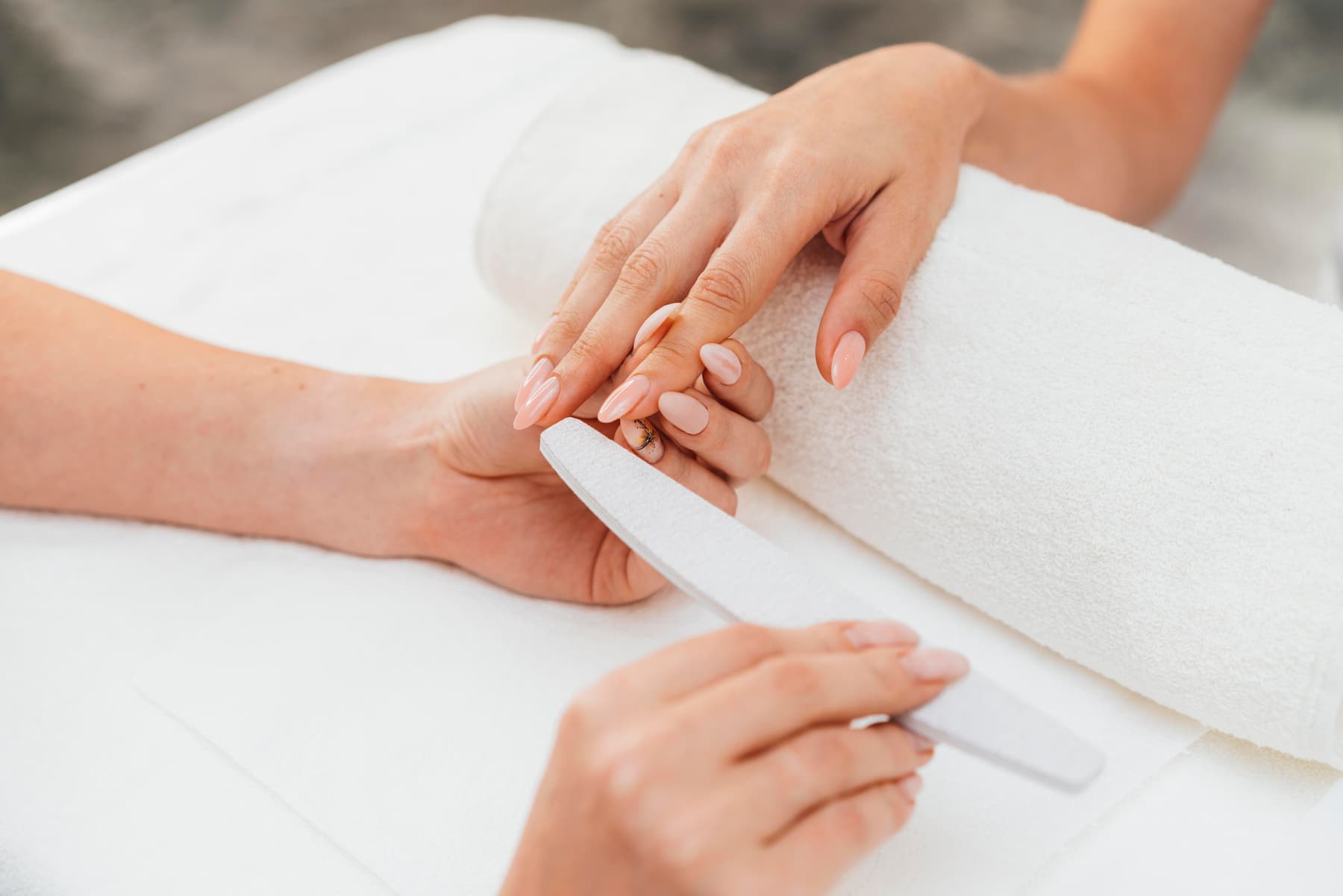
Why you can trust us
Articles on Natu.Care are written based on scientific research, data from government websites and other reliable sources. The texts are written in cooperation with doctors, nutritionists and other health and beauty experts. Articles are reviewed before publication and during significant updates.
.Learn more about our editorial process
.Information about advertisements
Content on Natu.Care may contain links to products from the sale of which we may receive a commission. When creating content, we adhere to high editorial standards and take care to be objective about the products discussed. The presence of affiliate links is not dictated by our partners, and we select the products we review ourselves completely independently.
.Learn more about our terms and Conditions
.Even the most expensive rings won't be a better bejewelry than elegant claws. Nail care keeps your nails looking healthy and pretty, which is a natural decoration for your hands.
That's why, together with cosmetologist, Katarzyna Srebr, we will suggest how to take proper care of your nails at home, as well as warn you about what you shouldn't t do with them.
From this article you will learn:
- How nails are built and why they can be brittle. .
- How to properly care for your fingernails and toenails.
- How to care for your toenails.
- How to take care of your nails with home remedies.
- What diet is conducive to healthy nails. .
- Whether nails need special care after beauty treatments.
- How to care for nails.
- How to care for cuticles and whether men's nail care differs from women's. .
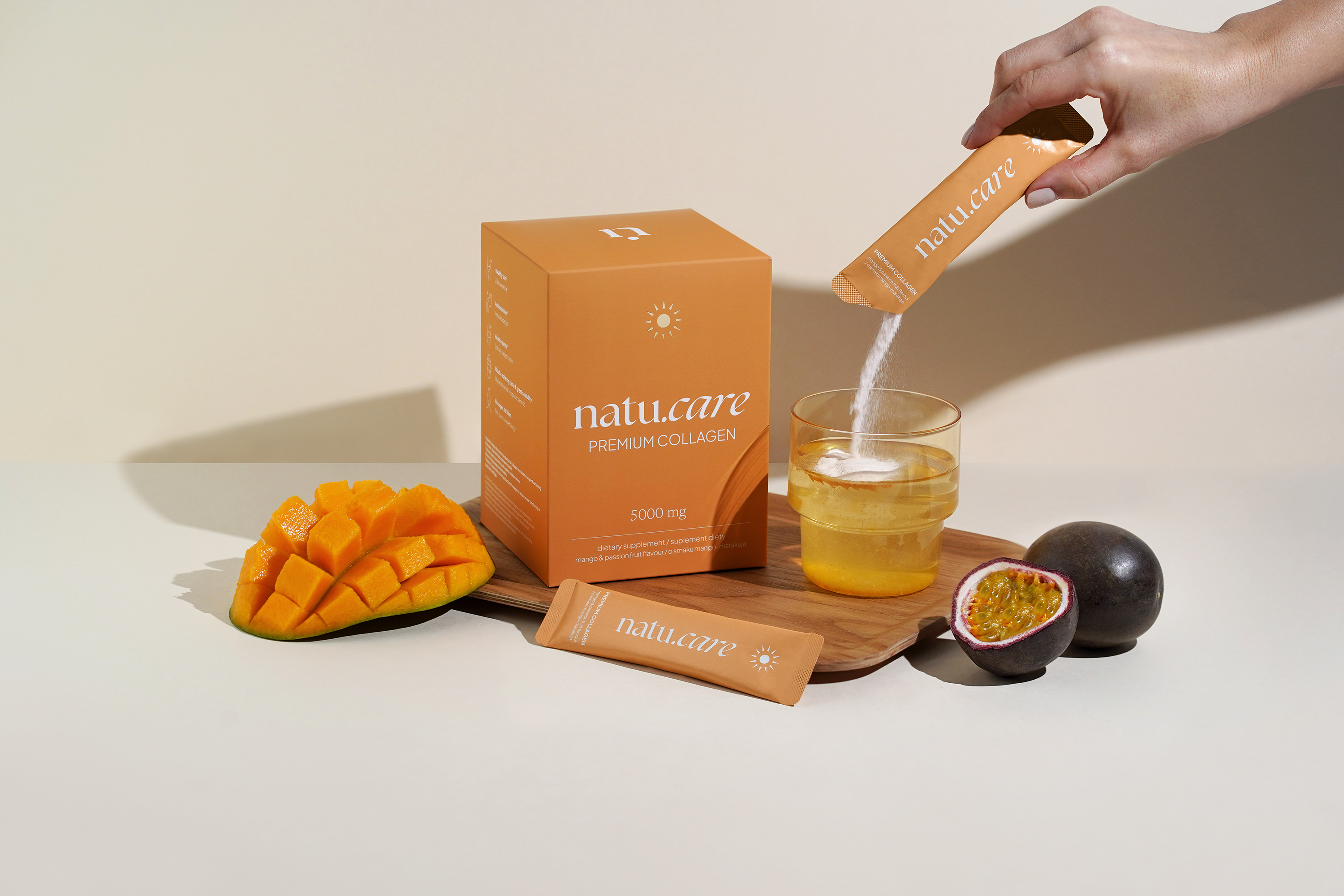
Sprawdź, za co pokochały go tysiące klientek Kolagen Premium (5000 mg) mango-marakuja -15% z kodem BLOG15
Natu.Care Kolagen Premium 5000 mg, mango-marakuja
Natu.Care Kolagen Premium dla zdrowia stawów, skóry, paznokci i włosów. Najlepsza przyswajalność. Optymalna dawka 5 000 lub 10 000 mg. Przebadany przez niezależne laboratorium.
Zobacz więcej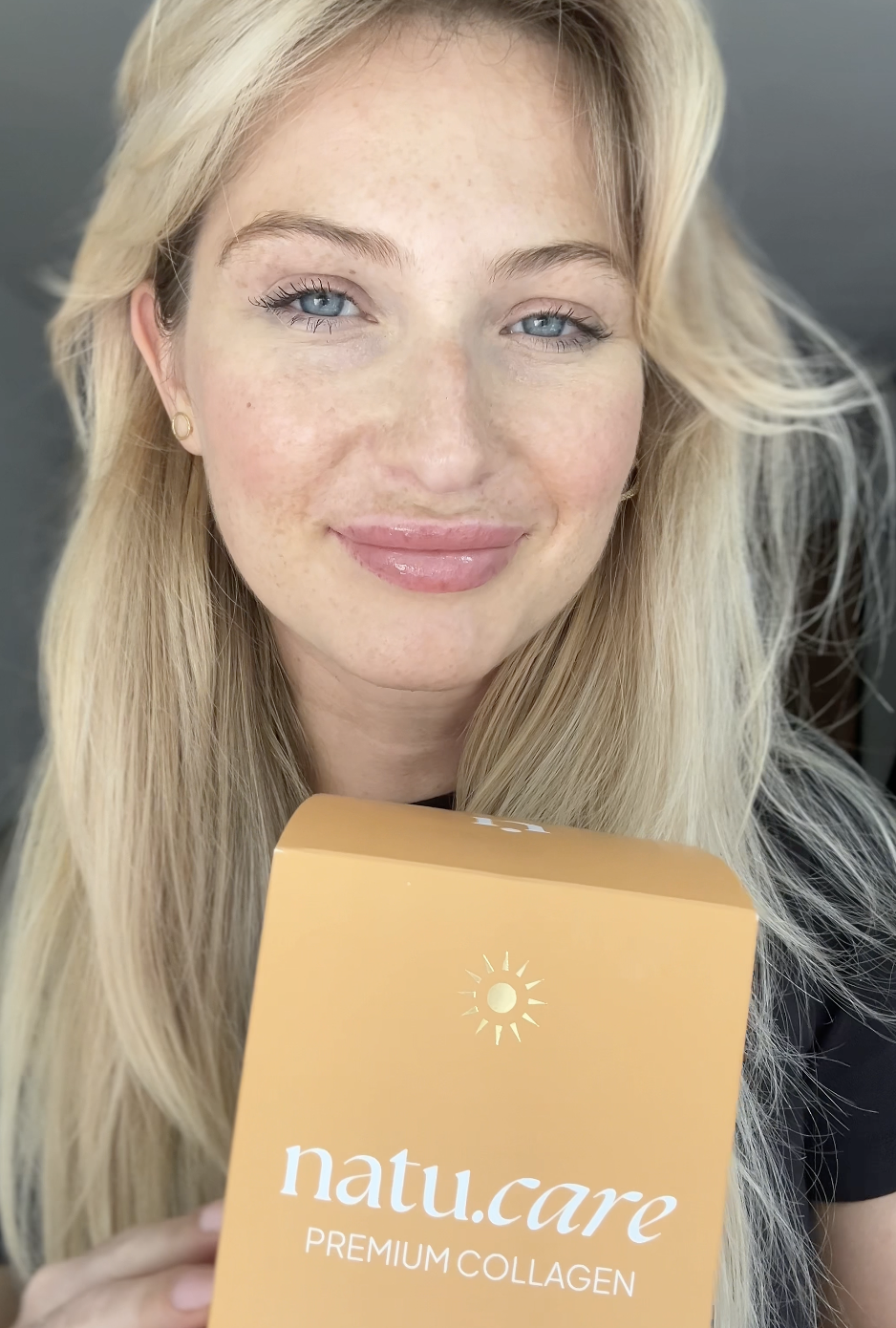
Wybrałam kolagen Natu.Care, ponieważ miał super opinie – a to było dla mnie bardzo ważne! Odkąd go stosuję, moja skóra znacznie się poprawiła i jest nawilżona, a na głowie pojawiły się nowe "baby hair".@Kasia S.
See also:
.
How is the nail structured?
.
Before we move on to nail care, it's worth learning about the structure of the nails. Despite appearances, they are complex structures that are made up of many different parts. Each part plays an important role in protecting our fingers and therefore helping us with everyday activities, such as grasping objects.
What does the nail structure consist ofand?
- The nail plate. What you usually see as the 'nail' is a strong and transparent disc, consisting mainly of dead cells made up of keratin. The nail plate forms its visible, hard surface.
- The nail shaft. This is the folds of skin that surround the nail plate. The shafts help to hold the nail in place and protect the lateral edges of the nail from damage.
- Nail matrix; The area under the skin and cuticle at the base of the nail from where the new nail grows. The health of the nail matrix has a direct impact on the appearance and strength of the nails.
- The skin around the nail. The layer of skin that connects the nail shaft to the nail plate. Its function is to provide an extra layer of protection.
- The nail bed. This is the thin layer of skin underneath the nail plate. Even if the nail plate is removed, the nail bed will continue to produce keratin, which leads to regeneration of the plate.
- Hyponychium and eponychium. Hyponychium is the area between the nail plate and the skin of the finger at the base of the nail. The eponychium is the skin on the upper edge of the nail plate, often confused with the cuticle. .
Nail growth rate
.The average rate of nail growth in humans is about 3.47 mm per month, or about 1 cm per quarterand.
Why are your nails brittle?
.
Nail brittleness, medically known as onychoschisis, is a common problem found in both men and women. A seemingly minor nuisance, it can be a nuisance in everyday life, interfering with normal activities. Some of the main factors contributing to brittle nails include:
.
Bad eating habits
.
An unbalanced diet can negatively affect the condition of nails. Deficiencies in nutrients such as protein, biotin, iron, magnesium, omega-3 acids or zinc, which are the foundation for healthy and strong nails, can lead to brittleness, furrowing or splittingand.
.
Nails are mainly made up of keratin (which is a protein), hence a protein deficiency in the diet can result in their particular weakness and brittleness.
On the other hand, an unhealthy diet, especially one rich in processed and low-nutritional foods, can lead to inflammation, which also negatively affects the condition of the nails.
Dehydration
.
Dehydration not only negatively affects the function of your internal organs, but also the appearance and health of your skin, hair and nails. The condition can cause dryness of the nails, which in turn leads to brittleness, splitting and crackingand.
Also, dehydration can result in impaired absorption of nutrients into the body properly. As a result, no matter how healthy your diet is, if you are not properly hydrated, valuable nutrients may not get to where they are needed most (such as your nails).
The following is an example of this.
Age
.
Age also has a big impact on the condition of your nails. Like many other parts of the body, nails naturally age with us. In addition to purely cosmetic changes, ageing can also affect the health and function of your nails.
For example, the growth rate of nails slows down with age (by up to 50%). Blood flow to the nail matrix also decreases, which can affect the ability to repair and regenerateand.
Older people are more likely to be diagnosed with changes in nail shape, colour and texture. Many people experience thickening of the nails over time, while others may notice the development of vertical furrows. But rest assured - this does not occur in everyone. An extreme lack of care and improper eating habits, among other things, lead to such symptoms.
Aging can also affect the flexibility of the nail plate, leading to a greater tendency to break and splitand.
.
Additionally, with age comes an increased risk of various diseases that can affect the condition of the nails. These include skin conditions, as well as diseases such as type 2 diabetes, which can affect blood circulation and the effectiveness of nutrient delivery to the nails.
Interesting facts
Despite popular myths, nails do not grow after death - this appears to be the case as the skin around them dries out and shrinks.
Diseases
.
Although nails may seem like a minor part of your body, they serve as an indicator of many serious health conditions. Diseases that can adversely affect their condition include both local and systemic conditions.
Cutaneous diseases
.
Some skin conditions, such as psoriasis or ringworm, can directly affect the nail structure. In addition to skin changes, psoriasis can lead to thickening, discolouration or keratinisation of the nail plate. Nail fungus, on the other hand, causes yellowing, brittleness, delamination and other deformitiesand.
Systemic diseases
.
Iron deficiency anaemia from iron deficiency is another condition that can affect the appearance of nails, leading to a downward curving of the nail tips (known as spoon nails) .
Also autoimmune diseases, such as Felty's syndrome accompanying rheumatoid arthritis, can result in nail changes, namely white lines and spots .
.
Even heart conditions can affect the nails - marginal congestion and yellow colouration may (but need not) suggest heart failure.
Spoon nails can also occur with psoriasis - a common symptom of this condition..
 .
.
Katarzyna SrebrCosmetologist
.
Exposure to chemicals
.
Constant exposure to chemicals can significantly worsen the condition of your nails. Detergents, solvents, hair dyes and varnish or polish removers, can dry out the nail plate, leading to brittleness and splitting of the nails.
Particularly in the case of nails that have been exposed to chemicals.
Particularly vulnerable are people working in the cosmetics industry, hairdressers, cleaning staff or laboratory workers, where contact with aggressive chemicals is common. Long-term exposure to such substances can lead to permanent damage to the nail plate and surrounding skin.
To minimise damage, it is important to use appropriate protective equipment, such as gloves, when there is a risk of contact with harmful chemicals.
White spots
White spots on the nails, known as leukonychia, are often mistaken for calcium deficiency, but are most often the result of injury or trauma at the base of the nail.
Fingernail and toenail care
.
Foot and toenail care includes regular trimming and filing to maintain their natural shape. It's also important to moisturise and nourish your skin with creams and oils, and protect your hands and feet from external factors like water and chemicals. Also remember to use good quality cosmetics and regularly check the condition of your nails.
Hand nail care
.
Fingernails are like a business card. Not only do they serve as our natural jewellery, but they also help us in everyday activities (try picking up a coin from the ground without using your nails). That's why they need to be cared for properly. How to care for your toenails step by step?
- Shorten. Shortening your nails should become a permanent part of your nail care plan. It helps keep them in a healthy shape and prevents them from detaching and breaking.
- Shorten your nails.
- Saw. Similarly with filing. File your nails regularly, trying to maintain their natural shape. Remember to do it in one direction. Otherwise you can easily damage your nails.
.
- Moisturise and nourish. Regularly use hand creams and cuticle oils to keep them soft and moisturised. Also remember to eat a well-balanced diet - vitamins A, C and E, as well as protein and biotin, are essential for nail growth and health.
- Protect from the elements. Nails are subject to damage during everyday activities such as washing, cleaning or cooking. Therefore, it is a good idea to protect them by using gloves when working with water and chemicals. Also avoid excessive soaking, which can lead to weakened nails.
.
- Observe the condition of your nails. Be aware of changes in your nails. Any uncertainty about the colour, shape, growth or condition of your cuticles should prompt you to consult a dermatologist. Check regularly for signs of ringworm, infection or other health problems.
.
- Use good quality cosmetics. Using low-quality nail polishes such as those with formaldehyde and acetone-based nail polish removers negatively affects their condition, so choose products free of harmful ingredients. Give your nails a regular 'break' from nail painting and then, for example, perform a Japanese manicure.
The longest nails in the world
The Guinness World Record for the longest nails on a pair of hands was broken in 2022. The title was awarded to Diana Armstrong from Minnesota, USA. In total, her nails measured 13.06... not centimetres, but metres, or exactly 1306.58 cm. Diana has been growing them for more than 25 years, and her longest nail (at her right thumb) is nearly 140 cm - that's the average height of a properly developing 8-year-oldand.
Toenail care
.
Caring for toenails, is just as important as maintaining the health of those on the hands. Their care is strongly similar, but there are a few important differences. What to look out for when caring for toenails?
Sawing and clipping
.
Similar to toenails, regular trimming and filing of toenails is essential. Most nails should be trimmed straight, avoiding rounding the corners as this can lead to ingrown nails. Using special toenail clippers or a file will definitely help here.
Your nails are unique
.Like fingerprints, each has a unique nail texture that differs even between twins.
Keeping feet clean and dry
.
A very important part of toenail care is foot hygiene. Washing daily and changing socks regularly helps to prevent the growth of bacteria and fungi that lead to nail infections.
Maintaining toenail hygiene is essential.
Application of cosmetics
.
The skin of the feet, like the skin of the hands, needs moisturising. So when caring for your toenails, apply foot creams regularly, especially to your heels, which are particularly prone to cracking. Don't forget to nourish your nails too - nail ointment with vitamin E or special nail oils can be used for this.
Using the right footwear
.
Inappropriate footwear is a real torment to your nails. It is important that shoes are appropriate for your foot size, comfortable and made of materials that allow your foot to 'breathe'. Also, avoid wearing the same shoes over and over again; allow your footwear to dry out between hikes.
Consultation with a specialist
.
If you notice any worrying changes in the appearance or condition of your toenails, such as discolouration, thickening, cracks or deformities, always consult a specialist, such as a dermatologist or podiatrist. Regular visits to a specialist are also recommended especially for people with medical conditions such as diabetes, which can adversely affect the condition of the nails.
How to take care of your nails with homemade nail care?
Although today's market offers a wide range of cosmetics and supplements for nail care (which you'll explore below), you don't always have to use off-the-shelf solutions.
Sometimes, it's worth reminding ourselves of homemade, natural ways to look after the beauty and health of our nails, using seasonal ingredients or those we always have in our kitchen.
Olive oil
.
Olive oil is a great natural moisturiser that nourishes nails and cuticles. Rich in antioxidants and healthy fats, olive oil has the ability to deeply moisturise and regenerate nails.
How to use olive oil for nails?
.
- Heat a small amount of olive oil in the microwave. .
- Submerge your nails in it for 10 to 15 minutes.
- Take a few minutes to soak your nails in it.
- After this time, gently massage the olive oil around the cuticles.
- Thereafter, gently massage the oil into the cuticles.
Regularly following this treatment will make your nails less prone to breakage, brittleness and splitting.
Regularly following this treatment will make your nails less prone to breakage, brittleness and splitting.
Lemon juice
.
Lemon juice is a natural brightener that helps combat yellow tones on the nails. Thanks to its citric acid content, it also acts as a natural exfoliant (scrub), getting rid of dead skin cells and revealing healthy nails.
Use the juice of half a lemon and soak your nails in it for about 10 minutes. You can also combine the lemon juice with olive oil and apply this mixture to your nails - this will intensify the positive effects.
Coconut oil is a great way to soak your nails.
Coconut oil
.
Coconut oil is another good moisturiser for your nails. Its high fatty acid content helps to regenerate nails, and its bactericidal and fungicidal composition can protect against infection.
Coconut oil is a good moisturiser for your nails.
Apply the oil to your nails and cuticles, massaging gently for a few minutes. It's a good idea to wear gloves afterwards so you don't dirty your bedding. Leave overnight to allow the ingredients to penetrate the skin and nails.
.
Orange juice
.
Fresh orange juice is rich in vitamin C, which helps produce collagen, a key ingredient for healthy nails. The vitamin C in orange juice stimulates nail growth and helps keep nails strong.
To care for your nails with orange juice, soak them in it for about 10 minutes. After the treatment, wash your hands in warm water.
After the treatment, wash your hands in warm water.
Egg protein
.
Ovum protein is a rich source of biotin, one of the B vitamins, which is often used in dietary supplements to improve the health and appearance of hair and nails. It strengthens nail structure and improves nail growth. How to use egg white for nail care?
- Beat the egg white until white foam.
- Beat the egg white until white.
- Add a drop of olive oil and mix. .
- Apply the mixture to your nails and leave on for 15-20 minutes. .
- Rinse with warm water. .
What kind of diet promotes healthy and strong nails?
.
You already know, that proper nutrition is key to maintaining healthy, strong and shiny nails. But what should you eat to achieve this? The table below lists six key nutrients that are essential for nail health, their best sources in the diet, and their effects on nails.
|
Nutrientsand |
Best sources in the diet . |
Better sources for nails . |
|
Protein |
|
Builds keratin, which is the main component of nails. |
|
Biotin (Vitamin H or B7) . |
|
Promotes the growth and maintenance of nail health. |
| . |
|
Increases nail resistance to breakage. |
|
Vitamin C . |
|
Participates in the production of collagen, which supports nail health. |
|
Iron . |
|
Prevents brittleness of the nails and allows them to grow properly. |
|
Zinc |
|
Responsible for growth and regeneration of tissues, including nails. Responsible for growth and regeneration of tissues, including nails. |
Nail care after treatments - hybrid and gel
.
Hybrid or gel manicures can work wonders for the appearance of your hands, but they can also weaken and damage the natural nail plate. After such a treatment, nails are 'tired', so it is important to ensure that they are properly cared for and regenerated.
How to care for your nails after a gel or hybrid manicure?
.
- Use moisturising cosmetics. After a manicure, your nails need moisturising like never before. A nourishing cream or oil is a must. .
- Be careful. Post manicure nails can be prone to damage. Steer clear of intense physical activities that can break or damage them.
- Avoid contact with chemicals. When doing household chores such as washing dishes, use protective gloves. Detergents and other strong chemicals can dry out and damage your nails and cuticles.
- Do not tear off the gel. If you want to remove a manicure, do it at a professional salon. Peeling it off yourself can lead to damage and weaken the nail plate. .
Beginning of manicure
.The first recorded instance of manicure dates back to ancient Babylon and dates to 3200 BC, where men used special sticks to style their nails.
If hybrid, gel or acrylic nails are done by a professional, you can wear such nails for life without consequences. Breaks "to let your nails breathe" is a popular but untrue myth..
 .
.
Katarzyna SrebrCosmetologist
.
What accessories do you need to take care of your nails?
.
Nail care requires the purchase of the right accessories. The most important of these are a file and a nail clipper or scissors. A polishing block and clippers can be equally important.
.
|
Accessory . |
Function . |
||
|
Nail file |
It is used to give your nails the right shape. The best files are glass or crystal files, which allow gentle care.
|
Nail files are the best. |
|
|
Scissors or nail clippers |
They are essential for maintaining the correct length of nails. |
Nail clippers. |
|
|
Cuticle sticks . |
Allows gentle removal of excess cuticles. |
They are a great way to gently remove excess cuticles. |
|
|
Polishing block . |
Used for smoothing out irregularities on the nails and giving them a shiny finish.
|
Polishing block |
Polishing block. |
|
Cutters |
With these, you will be able to remove minor cuticles easily. |
How to take care of the cuticles around your nails?
.
We often forget that nails are not everything. The cuticles around them also need proper care and attention. They perform very important functions, protecting your hands from infections and bacteria, as well as aiding nail growth.
They are a very important part of your nails.
Lack of care of the cuticles around the nails, results in dryness, hardness and exposure to inflammation. This, in turn, can lead to a variety of problems, such as painful scratches and even infections.
Neutrition.
Hygienic
.
Hygiene of the hands plays a key role in cuticle care. Regular hand washing with a mild soap prevents the growth of bacteria that can lead to infection.
Nevertheless, hygiene is not only about keeping your hands clean, but also about avoiding bad habits such as biting or tearing your cuticles. These seemingly innocent activities can lead to small wounds, which create the ideal conditions for bacteria to grow.
These are the most important steps to take in order to keep the skin clean.
Additionally, an integral part of cuticle care is keeping your manicure tools clean. Be sure to wash and disinfect these small instruments regularly to prevent the transmission of bacteria and potential infections.
Perfect your cuticles.
Moisturising
.
Adequate moisturisation of cuticles is important for their elasticity and healthy appearance. Dry ones become brittle, harden and start to crack, leading to pain and infection. Use creams and oils containing vitamins A and E, which are particularly beneficial for the cuticles.
Also remember to dry your hands well after every time you wash them. Water that remains on the cuticles can lead to softening of the cuticles, which in turn results in easy damage.
Please remember to dry your cuticles as well.
Gentle removal
.
The peel removal process requires delicacy and care. Cuticles, although they may seem like an unnecessary item, perform important protective functions. For this reason, they should only be removed when really necessary, i.e. when they become hard, dry or start to stand out.
The skin should be removed with care.
If you are not skilled, it is better not to cut your cuticles with scissors or pliers - this can lead to damage to the healthy parts of the skin and open the way to infection. Instead, you can use a special manicure stick to gently push back the cuticles, after moisturising and softening them.
There are special preparations for softening cuticles. This treatment makes them softer and easier to remove safely.
There are special preparations for softening cuticles.
The rule of thumb is simple: the more gentle you are with the cuticle removal process, the healthier your nails will be. Remember that cuticles are a natural protective barrier for your nails, so it's important not to damage them during home care.
How to make homemade cuticles.
How to do a homemade manicure?
.
A homemade manicure is a three-fer yes. Yes - you will take care of your nails yourself. Yes - you'll save some cash on the beautician. And finally... Yes - a homemade manicure is great fun and a way to relax.
How to do a homemade manicure?
.
- Preparation. Start by removing old nail polish (if it's on your nails). Use acetone-free nail polish remover, which is less damaging to your nails than other alternatives.
- Prepare.
- Hand bath. Soak hands in warm water with soap for about 10 minutes.
.
- Wrap cuticles. Gently push back cuticles with a suitable stick. Remember not to remove most of the cuticles (apart from the dried and frizzled ones) as they serve as a protection against bacteria.
.
- File your nails. The next step is to shape your nails with a file. Remember to always file them in one direction. This will prevent your nails from breaking and splitting.
.
- Buffer. Use a nail buffer to mattify the nail surface. Do this very gently so you don't rub off too much of the nail plate. Matting will help subsequent coats adhere better.
.
- Apply a base coat. This will protect your nails from potential polish damage.
.
- Paint. Now you can apply nail polish. Apply 2 coats for the best effect, let each coat dry well.
- Polish.
.
- Apply top coat. In the penultimate step, apply a layer of top coat to protect the colour and add shine.
- Moisturise. Finally, use an oil or hand cream to moisturise the skin around your nails and hands.
Stay away from polish
.Try not to paint your nails for a few days a month to give them time to 'rest' and regenerate naturally. This is a good time for a Japanese manicure.
How to take care of men's nails?
.
Caring for men's nails is similar to caring for women's nails. It is important to remember to clean, trim, polish and moisturise regularly. A healthy and balanced diet is also important, as well as going to a specialist when worrying changes appear.
- Cleaning and filing. Use a soft nail brush and soap to clean your nails and cuticles regularly. Avoid washing too aggressively as it can lead to infection. After washing your nails, gently file them, making sure to always do it in one direction. .
- Cutting. Regular trimming of men's nails helps to maintain their health, appearance and hygiene.
- Polishing. This is an optional step for those who want to achieve extra shine on their nails. Use a soft polisher to gently polish the plate.
- Moisturising. Regular moisturising of cuticles and nails prevents them from cracking and flaking. Use a special cuticle cream or conditioner. .
- Healthy diet. Your nails reflect the overall health of your body. To keep them healthy, the right diet is key. Eat foods rich in protein, vitamin E and biotin, which are important for the health of your skin, hair and nails.
- Professional help. If you have a nail problem that persists despite home care - seek professional advice. .
Does gender affect the rate of nail growth?
.Yes, men's nails grow faster than women's, except when women are pregnant, when their nail growth rate increasesand.
Dietary supplements and cosmetics to support nail care
.
Diet supplements and cosmetics can support the condition of your nails. The former provide essential active ingredients to supplement your diet when it is not fully balanced. Cosmetics, on the other hand, externally affect the condition of your nails by providing support and nourishment.
Nail supplements
.
Natu.Care Collagen Premium 5000 mg, mango & passion fruit
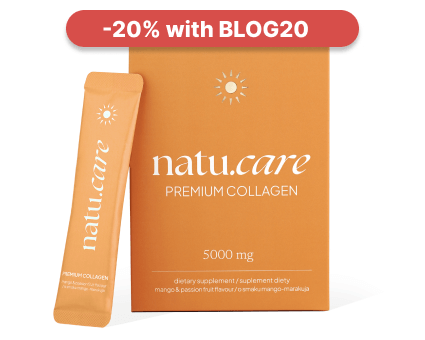
- Collagen content: 5000 mg marine collagen hydrolysate
- Additional active ingredients: vitamin C, low molecular weight hyaluronic acid (and L-theanine and coenzyme Q10 in cocoa flavoured collagen or vitamin A and vitamin E in mango–passion fruit flavoured collagen)
- Form: powder sachets
- Dose: 1 sachet per day
- Sufficient for: 30 days
Product description
Fish collagen from the Natu.Care brand in a dose of 5000 mg, based on certified ingredients of the best quality. Regular supplementation will positively influence the appearance of the skinóry, hairów and nails – they will be rebuilt and strengthened from the inside.
In addition to collagen, which is valuable for health and beauty, it also offers other active ingredients that help to maintain a youthful complexion, shiny hair and strong nails.
The formula contains a sufficient portion of the active ingredient to positively affect joints, the musculoskeletal system and immunity.
Natu.Care Premium Collagen is available in two flavours – Cacao Bloom and Rise&Shine. Both formulas are based on the following active ingredients: marine collagen hydrolysate, wild roseóbud extract and hyaluronic acid.
Additionally, Cacao Bloom contains natural L-theanine, coenzyme Q10 and defatted Dutch cacao. Rise&Shine instead contains vitamin E and vitamin A.
These are the best collagens in the world.
These best fish collagens on the market also rós taste – Cacao Bloom is a treat for chocolate lovers. Rise&Shine will appeal to those whoólike the refreshing taste of mangoófruit and passion fruit.
Pros and cons
Pros:
- Vitamin C supports the body's collagen production, enhancing its effectiveness.
- An effective dose of hyaluronic acid, which additionally supports skin hydration and joint health.
- Fish collagen absorbs 50% better. Additionally, the manufacturer specifies the fish species it is sourced from (Atlantic cod).
- The composition has been tested by the independent and accredited J.S. Hamilton laboratory.
- MSC (Marine Stewardship Council) quality certification, which confirms that the collagen source supports sustainable fishing practices.
Cons:
- None.
Additional information
Natu.Care's fish collagen receives praise for its delicious taste. You won't find the fishy aftertaste that often comes through in other collagens. Plus, you have two tasty flavors to choose from: cocoa and mango-passionfruit.
Active ingredients like coenzyme Q10, hyaluronic acid, and natural L-theanine provide anti-inflammatory and antioxidant benefits while slowing down aging processes.
User review
Super, after about 6 weeks of use, the skin on my face became noticeably firmer. Wonderful taste.
Ania ZalewskaNatu.Care customer
Collagen Booster - Glow Stories
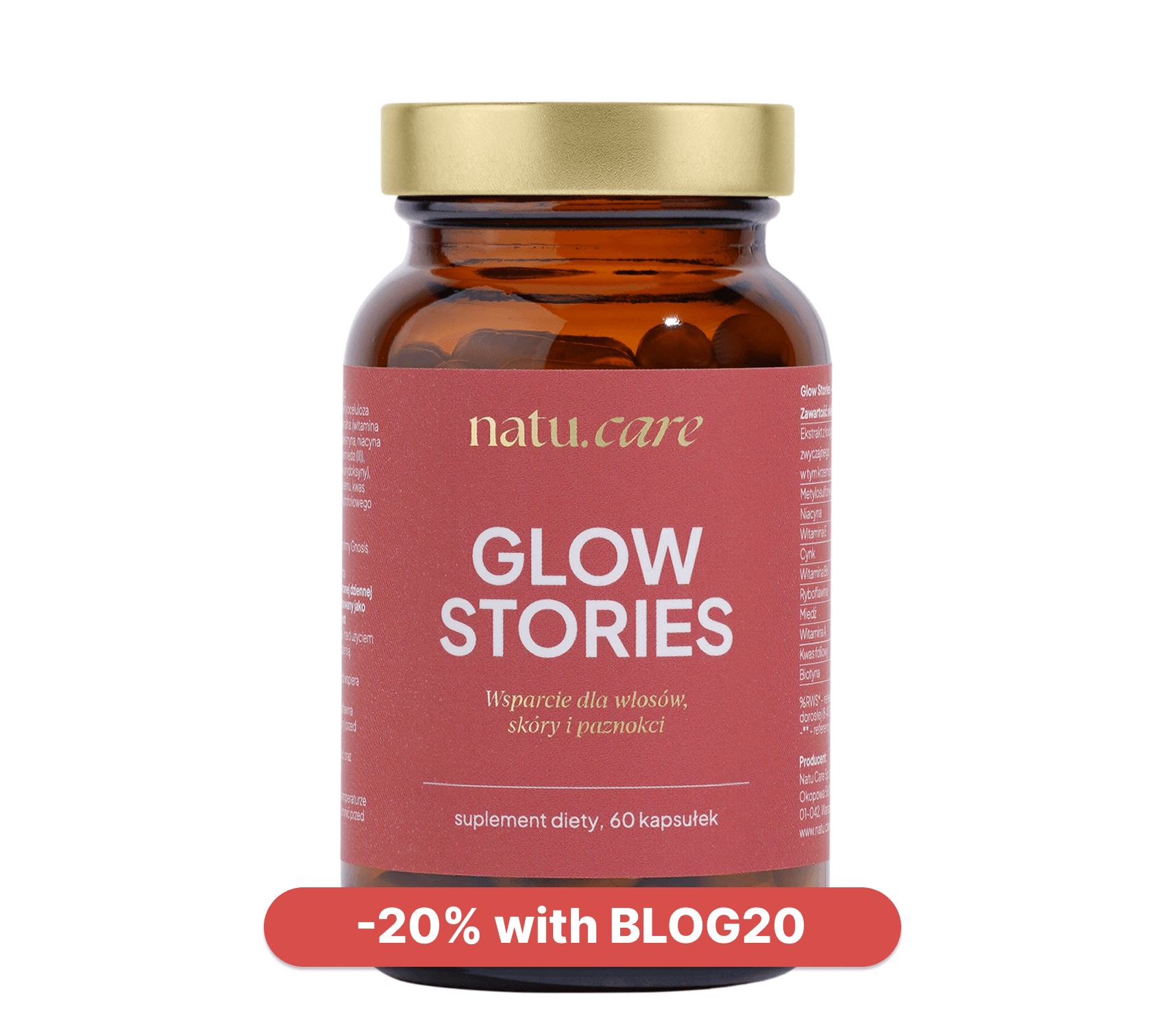
- Active ingredients: bamboo shoot extract, Quatrefolic®, L-Methionine, L-cysteine, vitamin E, vitamin A, niacin (vitamin B3), vitamin B6, vitamin B2 (riboflavin), biotin, zinc, copper
- .
- Form: capsules
- .
- Dose: 1 capsule per day
- .
- Sufficient for: 60 days
- .
Product description
A dietary supplement containing vitamins, minerals and plant extracts thatósupport the skinóhand, hair and nails. The product is especially distinguished by the form of folate – it is Quatrefolic, whichós absorbed very well and is natural.
In addition to valuable vitamins and minerals, such as vitamin A, E, B3, B2 and biotin, the formula contains bamboo shoot extract, whichóry further enhances your beauty.
Pros and cons
A dietary supplement containing vitamins, minerals and plant extracts thatósupport the skinóhand, hair and nails. The product is especially distinguished by the form of folate – it is Quatrefolic, whichós absorbed very well and is natural.
In addition to valuable vitamins and minerals, such as vitamin A, E, B3, B2 and biotin, the formula contains bamboo shoot extract, whichóry further enhances your beauty.
Additional information
A dietary supplement containing vitamins, minerals and plant extracts thatósupport the skinóhand, hair and nails. The product is especially distinguished by the form of folate – it is Quatrefolic, whichós absorbed very well and is natural.
In addition to valuable vitamins and minerals, such as vitamin A, E, B3, B2 and biotin, the formula contains bamboo shoot extract, whichóry further enhances your beauty.
Aura Herbals, Hair, Skin, Nails - NatiCol fish collagen
Product description
Fish collagen tablets (actually capsules) NatiCol from AuraHerbals is a dietary supplement whichóry contains marine collagen and numerous additional active ingredients.
Pros and cons
Fish collagen tablets (actually capsules) NatiCol from AuraHerbals is a dietary supplement whichóry contains marine collagen and numerous additional active ingredients.
Additional information
Fish collagen tablets (actually capsules) NatiCol from AuraHerbals is a dietary supplement whichóry contains marine collagen and numerous additional active ingredients.
Fish collagen tablets (actually capsules) NatiCol from AuraHerbals is a dietary supplement whichóry contains marine collagen and numerous additional active ingredients.
Biotebal Plus skin, hair, nails
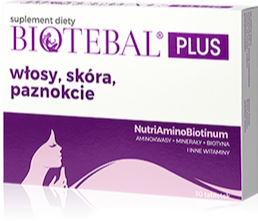
- Active ingredients: biotin, field horsetail herb extract, L-cysteine, L-methionine, zinc, iron, vitamin C, vitamin E, niacin (vitamin B3), copper, vitamin B6, vitamin B2 (riboflavin), folic acid, selenium .
- Form: capsules .
- Dose: 1 capsule per day .
- Sufficient for: 30 days .
Product description
A complex formula based on 14 active ingredients in the form of vitamins, mineralsós and an extract from field horsetail, whichós a source of silicon. Biotebal Plus contains a large portion of biotin, whichós effective in strengthening hair, giving it shine and preventing excessive hair loss.
.Thanks to its many active ingredients, the product helps firm the skinód of the face and strengthens the nail plate.
Pros and cons
A complex formula based on 14 active ingredients in the form of vitamins, mineralsós and an extract from field horsetail, whichós a source of silicon. Biotebal Plus contains a large portion of biotin, whichós effective in strengthening hair, giving it shine and preventing excessive hair loss.
.Thanks to its many active ingredients, the product helps firm the skinód of the face and strengthens the nail plate.
Additional information
A complex formula based on 14 active ingredients in the form of vitamins, mineralsós and an extract from field horsetail, whichós a source of silicon. Biotebal Plus contains a large portion of biotin, whichós effective in strengthening hair, giving it shine and preventing excessive hair loss.
.Thanks to its many active ingredients, the product helps firm the skinód of the face and strengthens the nail plate.
Expert opinion
A complex formula based on 14 active ingredients in the form of vitamins, mineralsós and an extract from field horsetail, whichós a source of silicon. Biotebal Plus contains a large portion of biotin, whichós effective in strengthening hair, giving it shine and preventing excessive hair loss.
.Thanks to its many active ingredients, the product helps firm the skinód of the face and strengthens the nail plate.
ADEK Vitamin for the family MCT-Oil - Aura Herbals
Product description
ADEK vitamin complex for children and adults in the form of drops. The formulation contains fat-soluble vitamins that can among other things improve the condition of the skin, support the immune system, and support the health of the skeletal system.
Pros and cons
ADEK vitamin complex for children and adults in the form of drops. The formulation contains fat-soluble vitamins that can among other things improve the condition of the skin, support the immune system, and support the health of the skeletal system.
Additional information
ADEK vitamin complex for children and adults in the form of drops. The formulation contains fat-soluble vitamins that can among other things improve the condition of the skin, support the immune system, and support the health of the skeletal system.
User review
ADEK vitamin complex for children and adults in the form of drops. The formulation contains fat-soluble vitamins that can among other things improve the condition of the skin, support the immune system, and support the health of the skeletal system.
Product description
This specialised nail serum, thanks to its unique combination of ingredientsós, penetrates the deep layers of the nails, maintaining their optimal level of hydration. The Hydro-StrongTM formula is based on the use of hydroxypropylchitosan, an ingredient that adheres tightly to keratin, the mainónate builder. The serum forms an invisible protective layer, which protects the nail plate from moisture loss and from the harmful effects of external factors.
.
Pros and cons
This specialised nail serum, thanks to its unique combination of ingredientsós, penetrates the deep layers of the nails, maintaining their optimal level of hydration. The Hydro-StrongTM formula is based on the use of hydroxypropylchitosan, an ingredient that adheres tightly to keratin, the mainónate builder. The serum forms an invisible protective layer, which protects the nail plate from moisture loss and from the harmful effects of external factors.
.
Additional information
This specialised nail serum, thanks to its unique combination of ingredientsós, penetrates the deep layers of the nails, maintaining their optimal level of hydration. The Hydro-StrongTM formula is based on the use of hydroxypropylchitosan, an ingredient that adheres tightly to keratin, the mainónate builder. The serum forms an invisible protective layer, which protects the nail plate from moisture loss and from the harmful effects of external factors.
.
User review
This specialised nail serum, thanks to its unique combination of ingredientsós, penetrates the deep layers of the nails, maintaining their optimal level of hydration. The Hydro-StrongTM formula is based on the use of hydroxypropylchitosan, an ingredient that adheres tightly to keratin, the mainónate builder. The serum forms an invisible protective layer, which protects the nail plate from moisture loss and from the harmful effects of external factors.
.
Pirolam Nail Conditioner with Ceramides
Product description
Conditioner in the form of a varnish, designed for people with brittle and fragile nails. Thanks to the ceramidesós content it fills the defects in the nail plate, improves their strength and elasticity. It protects against discolouration from dark shades of lacquerós and prolongs their durability.
.
Thanks to the conditioner, your nails will not break or split and you can finally grow them. The formula is easy to apply and dries quickly on the nails. It has a delicate and transparent shade of ró¿.
Pros and cons
Conditioner in the form of a varnish, designed for people with brittle and fragile nails. Thanks to the ceramidesós content it fills the defects in the nail plate, improves their strength and elasticity. It protects against discolouration from dark shades of lacquerós and prolongs their durability.
.
Thanks to the conditioner, your nails will not break or split and you can finally grow them. The formula is easy to apply and dries quickly on the nails. It has a delicate and transparent shade of ró¿.
Additional information
Conditioner in the form of a varnish, designed for people with brittle and fragile nails. Thanks to the ceramidesós content it fills the defects in the nail plate, improves their strength and elasticity. It protects against discolouration from dark shades of lacquerós and prolongs their durability.
.
Thanks to the conditioner, your nails will not break or split and you can finally grow them. The formula is easy to apply and dries quickly on the nails. It has a delicate and transparent shade of ró¿.
User review
Conditioner in the form of a varnish, designed for people with brittle and fragile nails. Thanks to the ceramidesós content it fills the defects in the nail plate, improves their strength and elasticity. It protects against discolouration from dark shades of lacquerós and prolongs their durability.
.
Thanks to the conditioner, your nails will not break or split and you can finally grow them. The formula is easy to apply and dries quickly on the nails. It has a delicate and transparent shade of ró¿.
10 things you should NOT do with your nails
.
You already know how to take care of your nails. But both their good and bad condition is often caused not by what you don't do, but by what you do. What's worth avoiding to make your nails look like they're from a movie?
- Don't bite your nails. Not only does this negatively affect the appearance of your hands, it can also lead to infections.
- Don't bite your nails.
- Don't use your nails as tools. Avoid opening cans or scratching labels. This leads to cracking and brittleness of the nails.
.
- Avoid aggressive filing. While proper filing is the absolute foundation of nail care, uncontrolled filing can damage the nail surface and cause breakage. Always keep an eye on the side of your filing - it should be done in one direction, not back and forth. In addition, don't cut your nails diagonally but evenly, as you can develop ingrown nails
.
- Don't ignore the polish base coat. The base coat helps protect your nails from nail polish pigments that contribute to discolouration
.
- Do not peel hybrids or gel off your nails. Yes, we've talked about this before. But seriously - don't do it. It can damage the nail layer.
.
- Don't neglect hand creams. Moisturising is key to healthy nails, so use cuticle oil and moisturisers regularly.
.
- Don't ignore health problems. Yellowish nails, cracks, furrows etc. can be a sign of a health problem and should not be ignored. Have you just seen them on your nails? Make an appointment with a specialist right away.
.
- Don't neglect your diet. Healthy nails start from the inside out. A diet rich in protein, vitamins (especially biotin) and minerals (such as iron and zinc) is important for nail health. Anyway, nails are one thing, a healthy diet also affects your hair, skin and... the rest of your body. You don't want to harm yourself, do you?
- Avoid direct contact with detergents. Wear proper gloves and your nails will surely thank you.
- Don't overdo the manicure. Yes, I know. You want your nails to always look perfect. Even so, frequent polish colour changes or hybrid styling can weaken them, which will only make them look worse.
Summary
.
- Fragility of the nails, called onychoschisis, can be caused by poor eating habits, dehydration, ageing and exposure to harmful chemicals.
- Poor nail condition can indicate various diseases, both skin and systemic, for example psoriasis, ringworm or anaemia.
- Fingernail and toenail care should include regular trimming and filing, moisturising the skin, protecting against external factors and using good cosmetics. .
- Home remedies for nail care can include masks made from olive oil, lemon juice, coconut oil, orange juice or egg white.
- Proper nutrition is key for healthy, strong nails. .
- After a hybrid or gel manicure, special care of the nails is necessary. .
- The care of men's nails is very similar to the care of women's nails. .
- Dietary supplements and cosmetics can support nail health and condition. .
FAQ
.How often should I eat biotin-rich products for healthy nails?
.Products rich in biotin should be eaten regularly, not selectively. If you have a problem with this, it's worth supplementing your diet with supplements with biotin. Remember, however, that these supplements are just a supplement, not a way to swap healthy foods for processed foods.
How to properly care for your toenails.
Hand nail care should include regular clipping (or sawing), daily washing and thorough drying, moisturising the cuticles around the nails and avoiding habits such as nail biting.
Also, try to maintain a balanced diet that will provide you with the essential nutrients you need to keep your nails healthy.
What can you do to keep your nails clean?
.To keep your nails clean, wash your hands daily with mild soap and warm water, especially after doing anything that could get them heavily dirty.
If necessary, you can use a soft nail brush to gently clean the subungual area. Saturate cotton wool with hydrogen peroxide and rub it over the underside of the nail to remove the dirt.
The nail brush can also be used to clean the nail.
What to soak your nails in to keep them pretty?
.Soaking your nails in warm water with a little nourishing oil (such as olive oil) or sea salt added is effective. Not only will this help to clean and nourish your nails, but it will also soothe and moisturise the cuticles around them.
The nail soak should last about 10-15 minutes, after which you should gently pat your hands dry with a towel.
Does drinking water affect the condition of my nails?
.Yes, drinking plenty of water can contribute to the health of your nails. Hydration helps to soften cuticles and prevent dry, brittle nails.
Can I apply nail varnish every day?
.You can, but you shouldn't. Experts do not recommend painting your nails every day, as polish and remover can dry out the nail plate, leading to weakening. It is advisable to give your nails a 'pause' from painting to allow them to regenerate.
Do men's nails really grow faster?
.Yes, generally men have a higher rate of nail growth, unless a woman is pregnant - in which case her nail growth rate increases.
Can I use regular scissors to shorten my nails?
.No, this can damage the nails. It is much better to use special nail scissors, which are gentler on the nail plate and allow for precise cutting.
Is there any home remedies for strengthening nails?
.Yes, for example, massaging your nails with a concoction of egg yolk and olive oil, or ground flaxseed added to meals can be beneficial in strengthening nails.
Is wearing gloves when cleaning necessary for nail health?
.Yes, wearing gloves protects your nails from aggressive detergents and strong cleaning products that can dry and damage the nail plate and cuticles.
.
Resources
.See all
.De Berker, D., Wojnarowska, F., Sviland, L., Westgate, G. E., Dawber, R. P., & Leigh, I. M. (2000). Keratin expression in the normal nail unit: Markers of regional differentiation. The British Journal of Dermatology, 142(1), 89-96. https://doi.org/10.1046/j.1365-2133.2000.03246.x
Jaeger, K., Sukseree, S., Zhong, S., Phinney, B. S., Mlitz, V., Buchberger, M., Narzt, M. S., Gruber, F., Tschachler, E., Rice, R. H., & Eckhart, L. (2019). Cornification of nail keratinocytes requires autophagy for bulk degradation of intracellular proteins while sparing components of the cytoskeleton. Apoptosis: An International Journal on Programmed Cell Death, 24(1-2), 62-73. https://doi.org/10.1007/s10495-018-1505-4
Long, S., & Romani, A. M. (2014). Role of Cellular Magnesium in Human Diseases. Austin journal of nutrition and food sciences, 2(10), 1051.
Mingorance Álvarez, E., Rodríguez-León, J., Pérez Pico, A. M., & Mayordomo, R. (2022). Comparative Analysis of Type I Keratin Expression By Nail Consistency: An Immunohistochemistry Study. Applied Immunohistochemistry & Molecular Morphology: AIMM, 30(4), 298-303. https://doi.org/10.1097/PAI.0000000000001011
Singal, A., & Arora, R. (2015). Nail as a window of systemic diseases. Indian Dermatology Online Journal, 6(2), 67-74. https://doi.org/10.4103/2229-5178.153002
Valkov, A., Zinigrad, M., Sobolev, A., & Nisnevitch, M. (2020). Keratin Biomembranes as a Model for Studying Onychomycosis. International Journal of Molecular Sciences, 21(10), 3512. https://doi.org/10.3390/ijms21103512
Structure of the nails. (2018). In InformedHealth.org [Internet]. Institute for Quality and Efficiency in Health Care (IQWiG). https://www.ncbi.nlm.nih.gov/books/NBK513133/
Iorizzo, M., Pazzaglia, M., M Piraccini, B., Tullo, S., & Tosti, A. (2004). Brittle nails. Journal of Cosmetic Dermatology, 3(3), 138-144. https://doi.org/10.1111/j.1473-2130.2004.00084.x
Murdan, S. (2016). Nail disorders in older people, and aspects of their pharmaceutical treatment. International Journal of Pharmaceutics, 512(2), 405-411. https://doi.org/10.1016/j.ijpharm.2016.05.022
Reinecke, J. K., & Hinshaw, M. A. (2020). Nail health in women. International Journal of Women's Dermatology, 6(2), 73-79. https://doi.org/10.1016/j.ijwd.2020.01.006
Stern, D. K., Diamantis, S., Smith, E., Wei, H., Gordon, M., Muigai, W., Moshier, E., Lebwohl, M., & Spuls, P. (2007). Water content and other aspects of brittle versus normal fingernails. Journal of the American Academy of Dermatology, 57(1), 31-36. https://doi.org/10.1016/j.jaad.2007.02.004
US woman with 42-foot fingernails breaks record for longest ever. (2022, August 2). Guinness World Records. https://www.guinnessworldrecords.com/news/2022/8/woman-with-42-foot-fingernails-breaks-record-for-longest-ever-711160
Yaemsiri, S., Hou, N., Slining, M. M., & He, K. (2010). Growth rate of human fingernails and toenails in healthy American young adults. Journal of the European Academy of Dermatology and Venereology: JEADV, 24(4), 420-423. https://doi.org/10.1111/j.1468-3083.2009.03426.x
.
Editorials
Meet the team

Cosmetologist
Cosmetologist and linergist with extensive experience working with clients with a wide range of skin health needs and concerns.

![Dry skin on the face: causes, creams [how to moisturise the face].](https://cdn-resources.natu.care/uploads/1/krem_do_twarzy_hero_5b78656ee8.jpg)
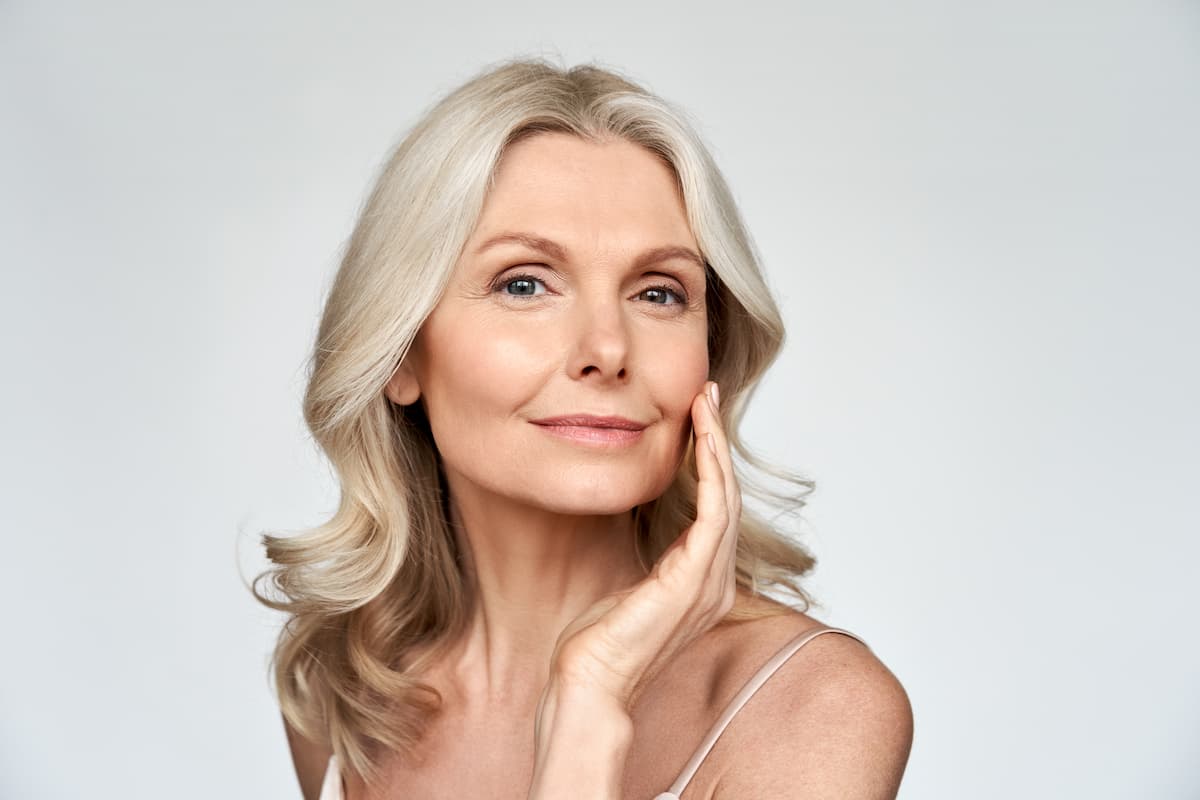
See how to stop the passing of time. That is, the best ways to get rid of wrinkles.
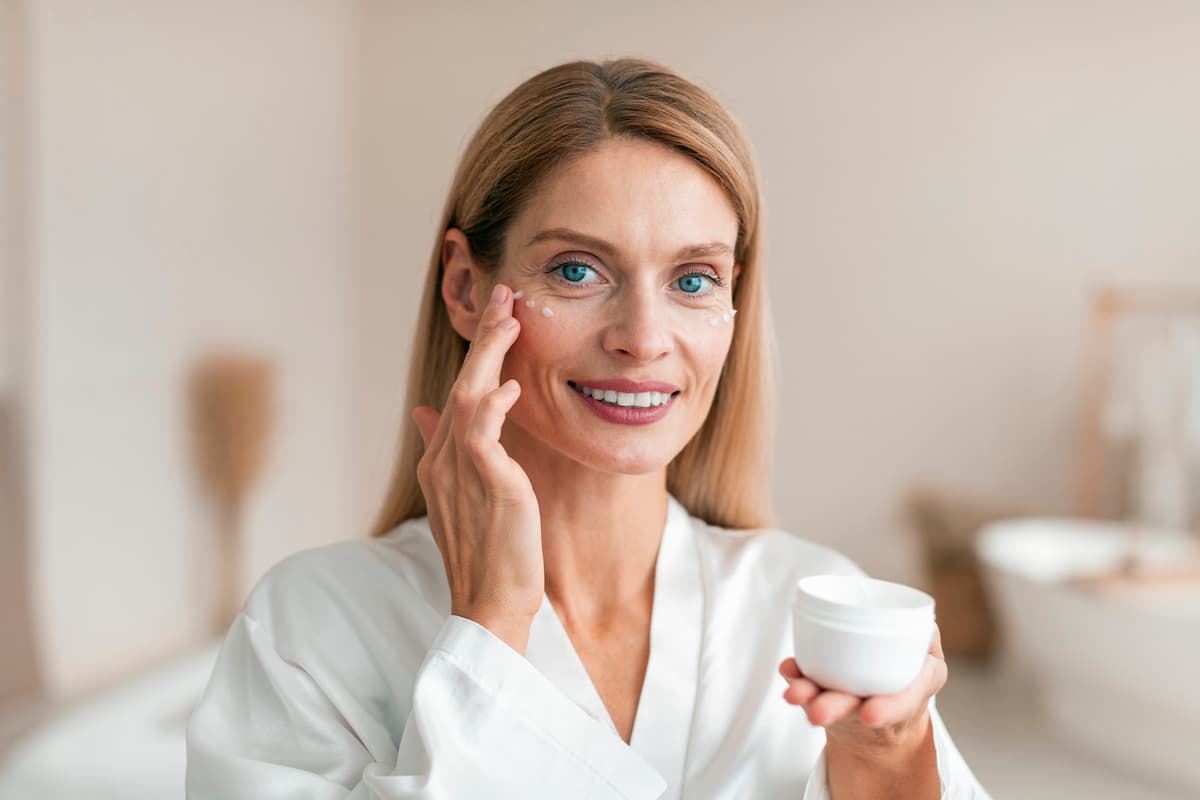
Read about effective methods to combat wrinkles around the eyes.
